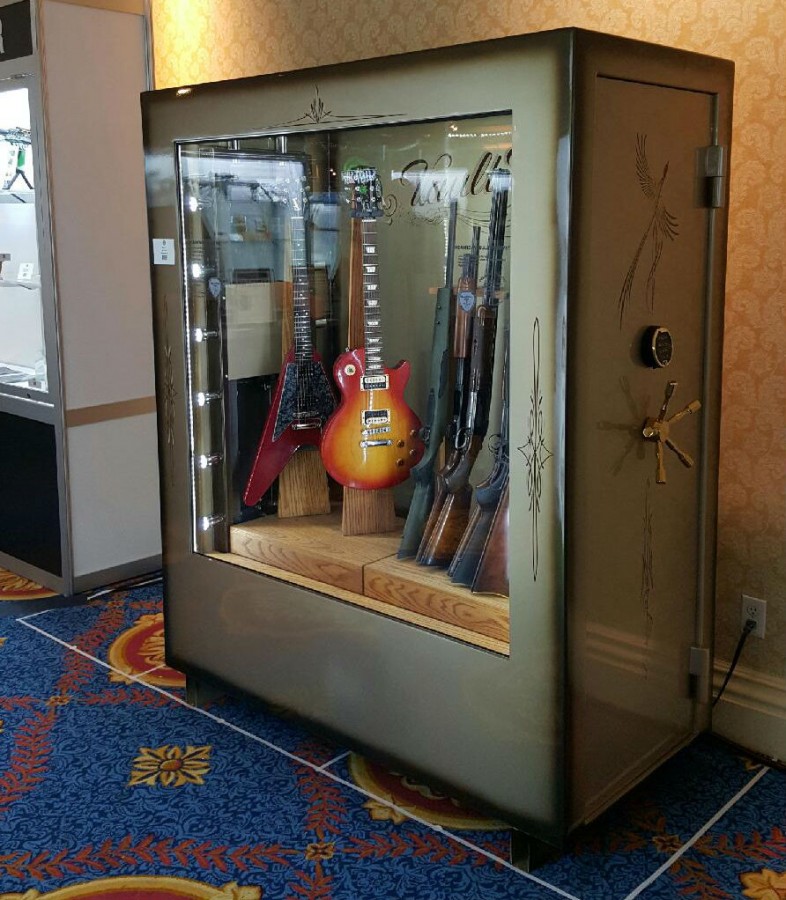
There doesn’t seem to be much innovation in the gun safe business, because its hard to build a better mousetrap. But California-based safe and vault door company Vault Pro USA recognized that some of its high-end customers want to be able to view the items in their safe. The solution: a ballistic glass-fronted safe . . .
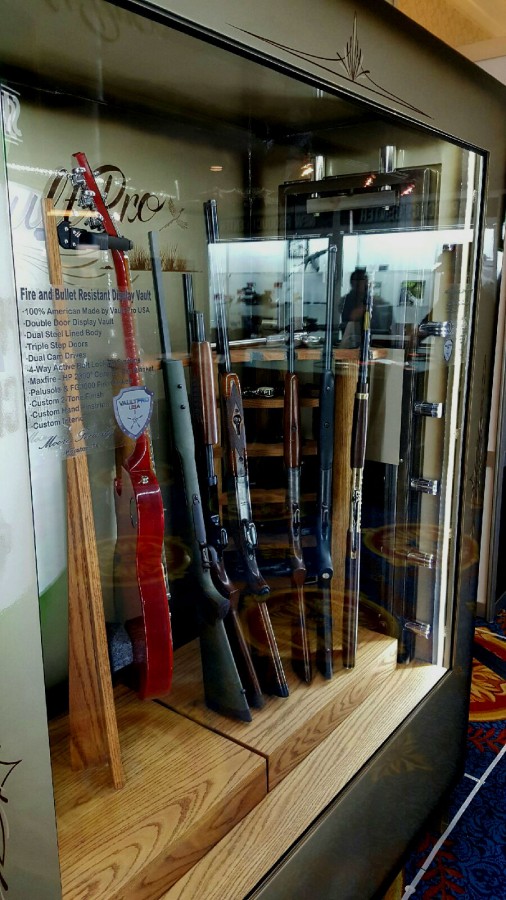
Pretty cool, eh? Unfortunately, this safe will run you about the same as your average car. Vault-Pro CEO Tony Darling tells me that the front panel alone costs him 5k. Well, Ok then.
For the rest of us 99%ers, Vault-Pro makes some seriously high quality safes at very fair prices. To be frank, safes are like most things in life: you get what you pay for. But safes are an area that many of us will skimp on because they aren’t much “fun.” Ever see that guy at the range that shoots a $6000 sniper rifle but uses a $200 spotting scope? Yeah, safes can be like that. But if your guns are in a cheap safe, they will not survive a fire. I has seen an entire gun collection get ruined because the safe was not up to the task. So when I was in the market for a new 60-gun safe last year, I ended up buying a 2000 lb. Vault Pro USA. The Vault Pro safes had all of the same features as a Fort Knox safe, but at considerably less cost. One feature that I absolutely insist on is a double step door, and Vault Pro has this feature:
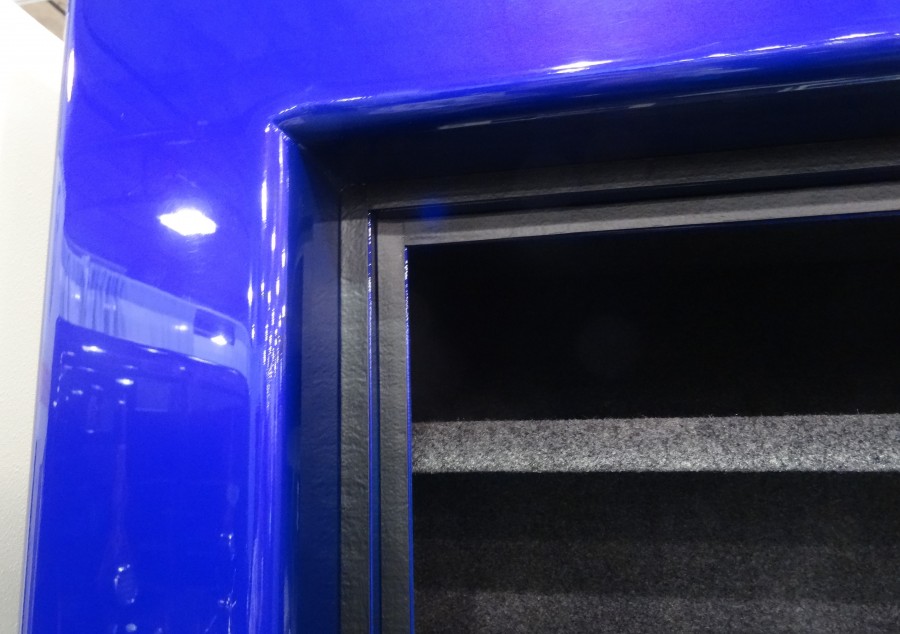
In fact, Vault Pro is such a big believer in stepped doors it is now producing safes with optional triple-stepped doors:
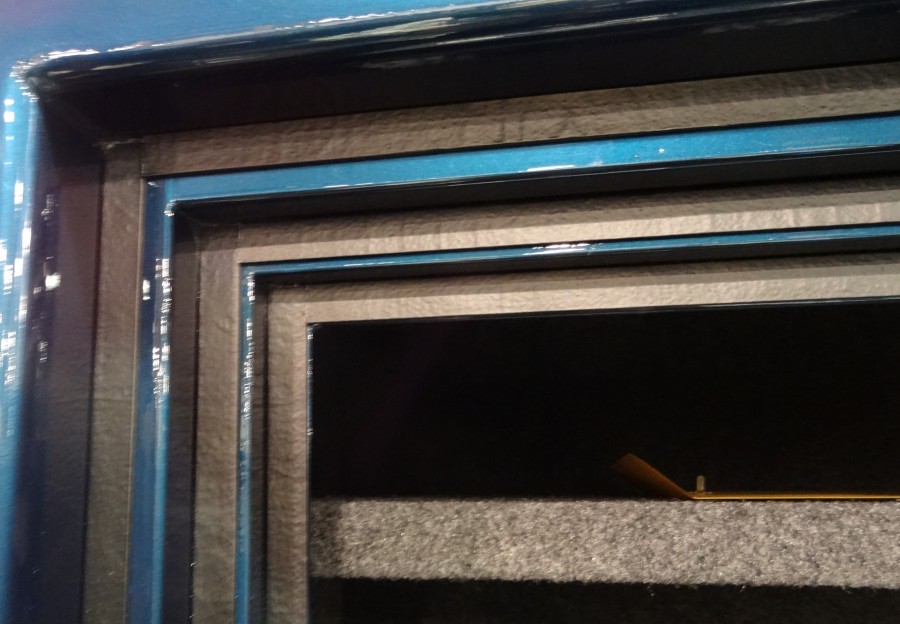
I cheaped-out on the finish, and opted for a basic matt black. But if you want to spend the extra dinero, Vault-Pro has some exceptional high-gloss finishes and custom options:
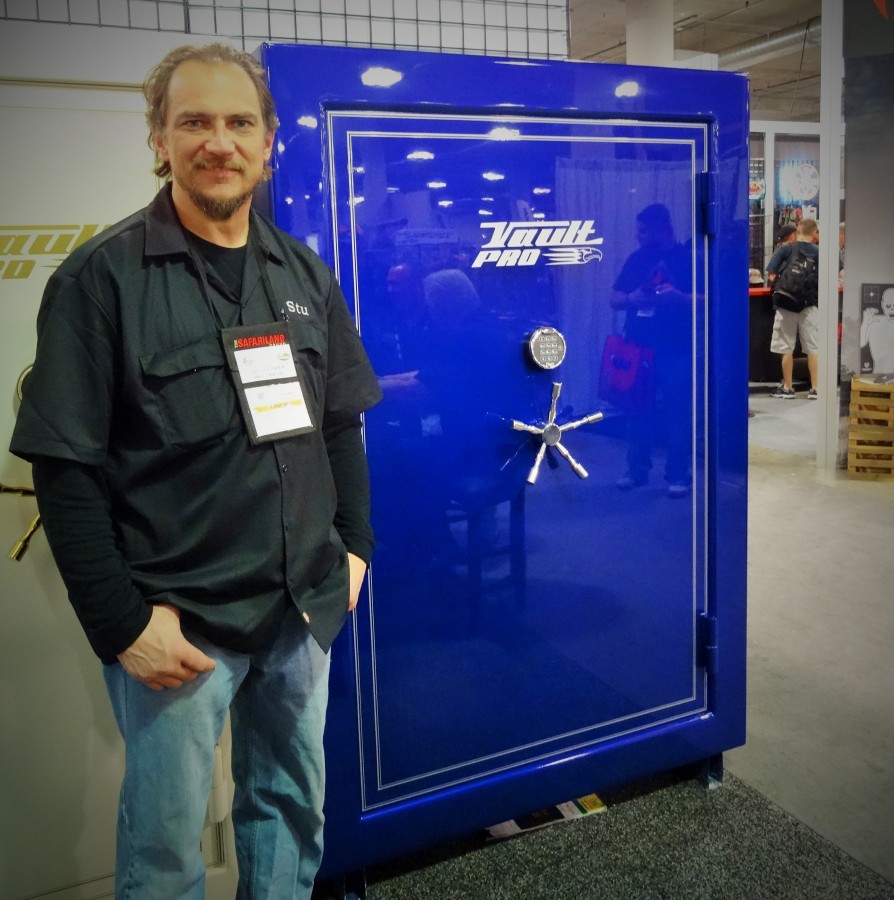
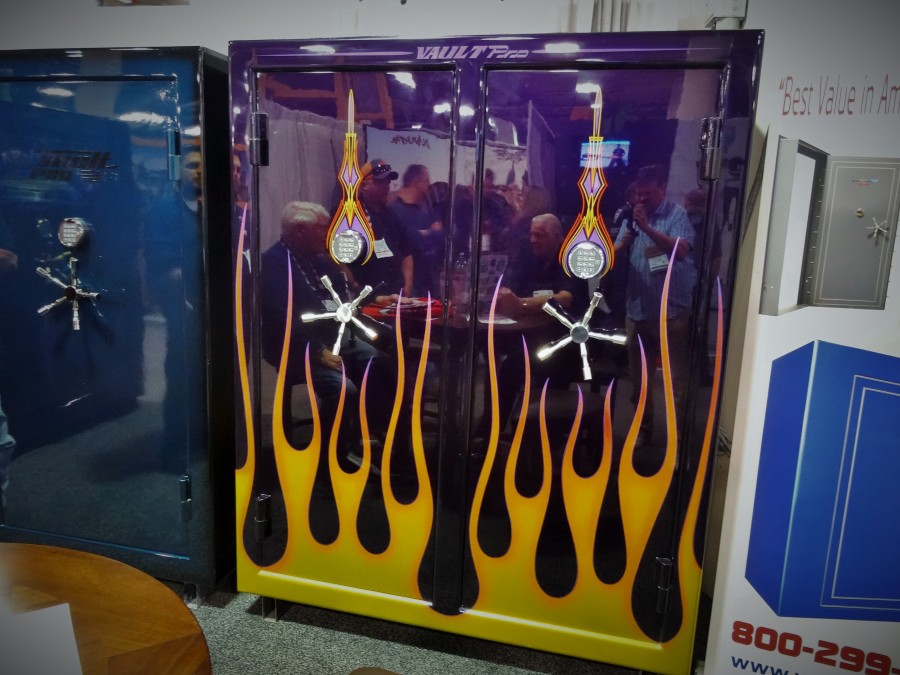
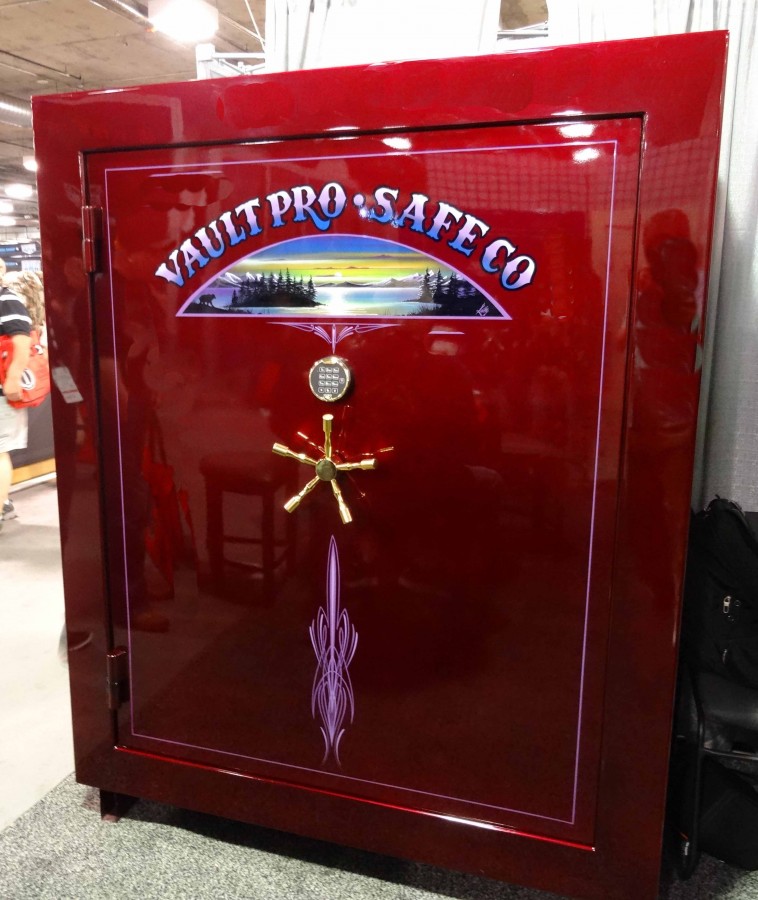

Vault Pro will also customize the interior of your safe however you want it:


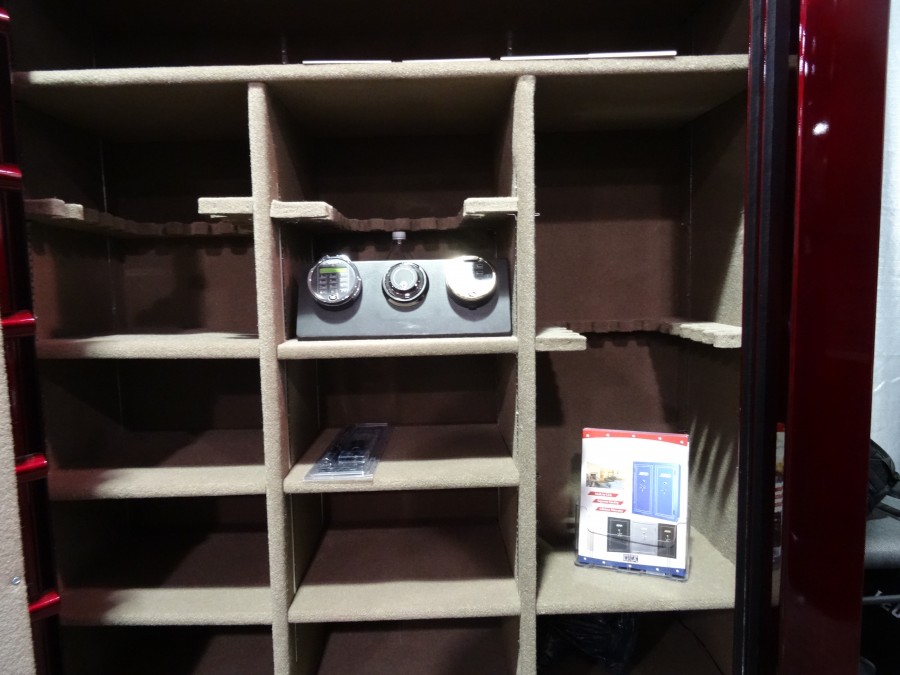
Vault Pro will also add pistol hooks in the door, which I really like. If you trace out your guns on paper, Vault-Pro will size the hooks perfectly. I didn’t bother with that, but its up to you.
![IMG_0316[1]](https://cdn0.thetruthaboutguns.com/wp-content/uploads/2016/01/IMG_03161-900x675.jpg)

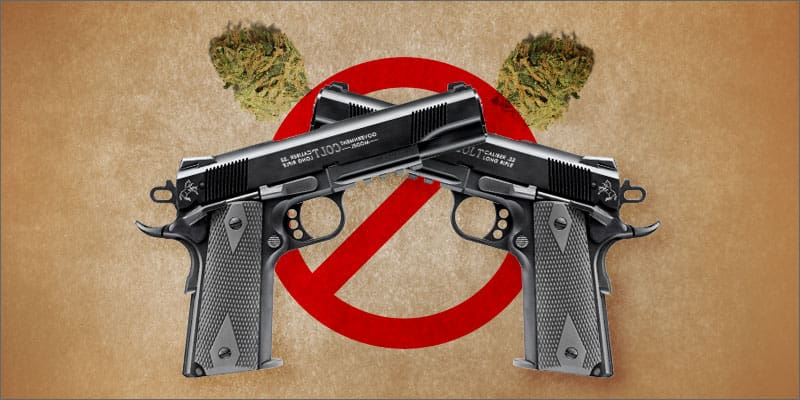


I’ll take that, as pictured, please. Include the Les Paul and I’m a super happy camper.
I do feel conflicted about hiding my Gibson Custom Shop Tony Iommi SG from the world.
Outstanding, as soon as I win the lottery I am in for the double door safe with the flame paint job.
Huh. I bought a gun safe from a local outfit, whose main claim to fire safety was having no holes whatsoever for power cords. They claimed to keep the interior temp to 120F or so, said any safe with a power cord hole could not keep the interior temps below 360F or so, which is where solder flows. IOW, their safe would keep electronics safe, most would not.
They had two safes on display that they had traded for new safes after the houses had burned down around them; I think that was their standard guarantee. One had slightly singed carpet on the front of one level near the top, the other had a slightly smudged corner. They said everything inside had been protected in both safes.
These guys — looks like a lot more burglar protection than mine, but while they brag about two hours at 1880F, they say nothing about how hot the interior gets, and make no mention of a power cord hole. At least no mention I saw in a minute of poking around. But they do brag of lights which come on when the door is open, and unless those lights are battery powered, that implies a power cord hole.
It implies it, however there are ways to work around that. A high-temp ceramic plugged hole with inductive connection across it could do the trick, especially for low power requirements like running a few LEDs.
Now, if it were temperature and humidity controlked, I could keep my guns, guitars and wine in one place. ……
“I could keep my guns, guitars and wine in one place. ……”
Aren’t wine cellars on the cool and damp side?
Not an ideal environ for guns…
(Oh, and you forgot the cigars…)
Yeah. Don’t want those corks to dry out.
Not so much an issue anymore. Even the finest wines are now being corked with synthetic corks – better control on density and quality control. In fact, the market for cork has declined so much that the old, historic cork trees in Spain are coming under the axe to clear out for more lucrative crops, or shopping malls.
60% humidity is ideal.
It’s not exactly dank.
I forget the optimal humidity, but wooden instruments need some too. Or rather, they need a constant level. I’ve worn down frets by polishing them when I lived in the Midwest.
No. I did not forget cigars. I can’t stand ’em.
Cigars are *fantastic* for keeping my sister’s kids far away from me.
And they help with the mosquitoes down here in the swamps of Florida…
🙂
Defens
Actually synthetic forks suck. They have O2 ingress rates far above natural cork. Screw caps are infinitely superior. They are so tight that wine making has to be a bit more oxidative when the wine will be bottled under Stelvin closures. If not, wines tend to show reductive flaws when finished with screw caps.
Username checks out
Considering the kind of money some folks I know have tied up in vintage guitars, I know at least one guy who might be interested in that ballistic glass one…
One advantage of the see-through vault is that you can position black powder and a sparker such that would-be thieves see the danger of trying to break into the safe … and hopefully not bother.
They’ll take an inventory of your stuff and go back and tell their buddies who have the serious tools…
If you have the money for that safe, you ought to have a proper security system as well. You’ll know someone was there and should be able to have the police catch them.
I have a economy class safe, and yet still had enough cash to install a proper camera system. Resolution isn’t great, but with the lights on the image is enough to identify someone. That’d be enough help for the police to track down the burglar.
If you have the cash for this gawdy safe, you’ve probably got the cash for high end cameras and security, a major deterrent. If the tipsters get arrested, their buddies aren’t going to attempt a break in.
Put a skeleton inside with a sign around it’s neck:
“Last guy who broke in; needs company.”
But if they can see the boobie trap, then they can figure out how to beat the boobie trap…. Or look at the stuff inside and figure out how much effort they want to invest in to stealing the stuff within.
I don’t know not sure I would want to advertise any booby traps. It would suck having my guns blown up, but having had stuff stolen before, part me would rather just come home and a find a smoking crater with bits of burglar in it in the back corner of my garage.
That is nice, if you’ve got the house for it and the money.
I’ve too many in my small safe that seeing inside is not really good.
On a semi related note, if the current administration offered up a $500 tax credit on gun safes, would you take advantage? I mean if they really care about safe storage they’d help you out.
WA doesn’t charge sales tax on gun safes…
The guys that buy these must never move, or can pay folks to do it for them. I’ve always favored multiple smaller safes, easier to move and will take longer to break into overall. Sturdy is my go to, they make a fantastic product.
Sure, take $500 from Obowow to get on a list as someone with enough guns to need a safe.
PHUCK this administration.
For that kind of money, I would expect some nicer wood than that homely plain-sawn oak. I mean, if you’re going to display stuff, have some class.
Too rich for my blood. Pass.
Vault-Pro built me three custom vault doors for a high security renovation. Hugely impressed with the quality, 2 30″ doors ran about $4k each and the big 40-42″ door was just under $6k. Strongly recommend, customer service and lead times were great.
That see thru dispaly vault would be just the ticket to display my x wife in. Wonder if it’s scream proof?
Depends:
Is she a harpy, banshee, or just a shrill harlot?
Yes.
“Yes”
lmfao
WINNER, WINNER !!
And here all this time I thought I was the only one to hit the trifecta. Let me know how the soundproofing works out for you. If you’re good to go with the glass version, I might have to opt for a fully enclosed one. I don’t want to see her any more than I want to hear her.
And only a couple of months of alimony would cover the cost of this safe!
Those safes are so good looking that I would be afraid of someone messing with them, so I’d keep them locked up in a safe.
I like the idea of hiding the safe in the wall, furniture, or even floor.
Another reminder that I need a bigger safe. I think 60 gun sounds about right, for a few months!
Do they make a manual lock version?
Oh please please give me a display vault !!!
There’s guns for shooting and there’s guns for showing. Personally, I have a hard time differentiating between the categories, so I do both. A display safe is… interesting, but a big old gun vault will be better.
Can I ask how in the shit do you get a 1 ton safe into a house….
Probably a wad of cash to the guys who carried it in.
Professional safe installers aren’t any different that piano delivery men. They both handle ridiculously heavy and clunky items. I’ve seen two guys move a upright grand (about the size and weight of a large safe) into a house in about 15 minutes.
It’s all about practice.
Think like an Egyptian.
Inclined planes, pulley rigging, golf balls and roller bars.
I’ve moved larger objects solo, with nothing but my back and legs. You just have to use your brain to solve the problems.
One thing to consider when considering a safe. In a remote rural area my dad is on the volunteer fire department. When called to a fire the local volunteer department was greated to the sound of rounds going off. Everyone looked at each other and realized what they were getting paid for (nothing) was not worth the risk of taking any form of lead. They let the house burn to the ground. The next day my dad put in an order for his first safe – now has two.
I would suggest some physics classes for the firemen. With loose rounds in a fire, your real danger is from the casings and not the bullets themselves, and I imagine the danger would be at very close range since casings aren’t going to be very aerodynamic.
Still a great point, since this is likely how most would react to the sounds of rounds popping off.
Mythbusters did a test on this actually. Even 50BMG rounds aren’t dangerous when cooked off. It didn’t even penetrate the glass on the oven they were using.
Nevertheless, I keep mine in a metal security cabinet to avoid injuries to first responders from rounds cooking off in a fire.
I’m a volunteer fireman and when I’m discussing this with other VFD’s, here’s my summary:
1. Bullets will typically not become loose of cases, especially on mil-spec ammo with crimped bullets. Primers will dislodge first. If the bullets do come loose of the case, they’ll have no velocity to speak of. Smokeless powder needs pressure to build pressure, and when the primer or bullet dislodges quickly under only a few hundred pounds of pressure, the rest of the propellant will burn off rapidly like a flare, but not an explosion.
2. The low velocities involved, and the non-explosive manner in which smokeless propellants cook off, mean that the fire will be a fairly ordinary fire, just at faster propagation and higher heat. “Fairly ordinary” means that the firefighters don’t need special considerations (ala hazmat, special suppressants, etc) for the fire.
3. Standard NFPA-compliant structural bunker or turnout gear will protect the firefighter from any flying primers or low-velocity projectiles out of a non-contained smokeless ammo fire. I would have no qualms about standing next to a pallet of burning ammo in my bunkers, helmet, face shield and SCBA.
4. Water, or wet foam, is used to extinguish or suppress fires in smokeless ammo.
Storing large amounts of smokeless ammo in a gun safe is a seriously unwise idea. If the ammo cooks off, now you have a rapidly expanding mass inside containment. Your guns (and other valuables) will be ruined because of the heat generated by the smokeless powder ignition, but more than that, the safe will possibly rupture due to the overpressure condition. When I say “large amount of smokeless ammo,” I mean boxes and boxes of ammo, not a couple magazines ready-to-go for a couple of guns in the safe.
What’s the skinny on black powder and it’s subsitutes in a fire?
Those are bad news, and they’re allowed to cook off.
There is so little additional risk there is no reason to let the house burn down simply because there is some popping.
https://youtu.be/3SlOXowwC4c?t=17m18s
Utter BS, there are no guns in Californiz and all the gutiars are in the pawn shops. Kinda looks like one of those claw games.
Egads, that’d hold about a twentieth of a collection from someone who could actually afford it.
“Can I ask how in the shit do you get a 1 ton safe into a house….”
2-ton pallet jack, floor protection, some large iron bars and some large men to maneuver all of that.
Does have to fit through the doorways, of course.
That’s also how it gets out again – bolt down your safe.
One thing that isn’t discussed enough about safes is that you simply must deal with the humidity issue inside of them.
In the last year, I’ve had what used to be (NB the past perfect continuous tense) two very nice shotguns in my shop that had been turned into pitted wall hangers as a result of being in a gun safe in coastal areas of the US for years without being attended with regular cleaning & oiling. I’m talking of a decade or more inattention, but still, kept secure inside a safe.
You must deal with the moisture issue in many areas of the US, especially east of the dry line and coastal areas. There are several ways to do this:
1. Silica gel containers. You can obtain these from Brownells, MidwayUSA and other places. Get the larger containers of silica gel. You will need to bake these out at 325F for several houses several times a year.
2. Goldren Rods or similar heaters. A 40 watt incandescent light bulb in your safe will also do the trick. You need to raise the internal temperature of the safe above the outside ambient temp in order to prevent condensation.
3. In larger safes, you could use a small dehumidifier unit, and pipe the condensate hose to the outside of the safe through the power cord hole in the back of the safe.
Use fire caulk on the electrical penetration. It protects against smoke and fire products infiltrating if the fire is somewhere else in the house and expands to seal the hole if the fire reaches the safe and melts the cable. But if you are really worried, put a fire sprinkler above the safe and add a smoke detector to your burglary alarm so the FD shows up before the safe is buried in the smoldering debris that once was your house.
$8K for a “safe” with 10-gauge walls and a 1/4″ plate door?
I think you can do better than that. I know I can.
I love my Sturdy Safe without the see though door and generic grey paint job.
Comments are closed.